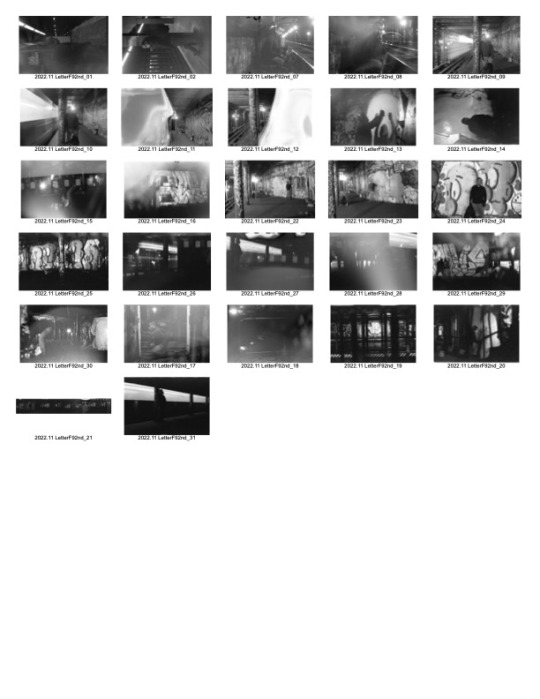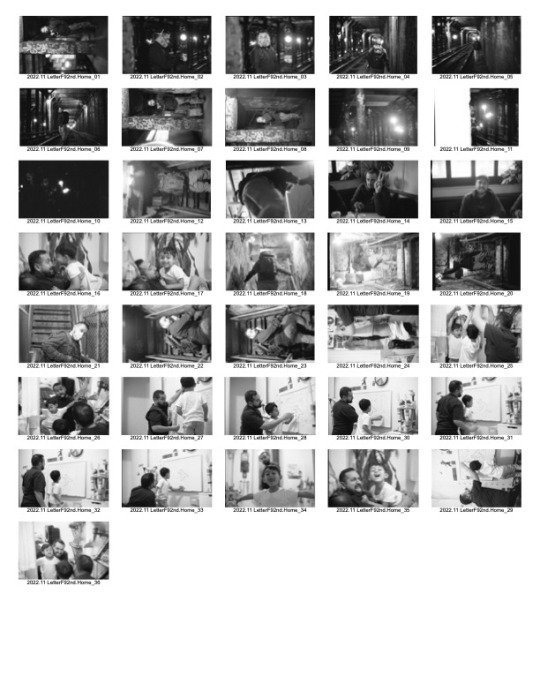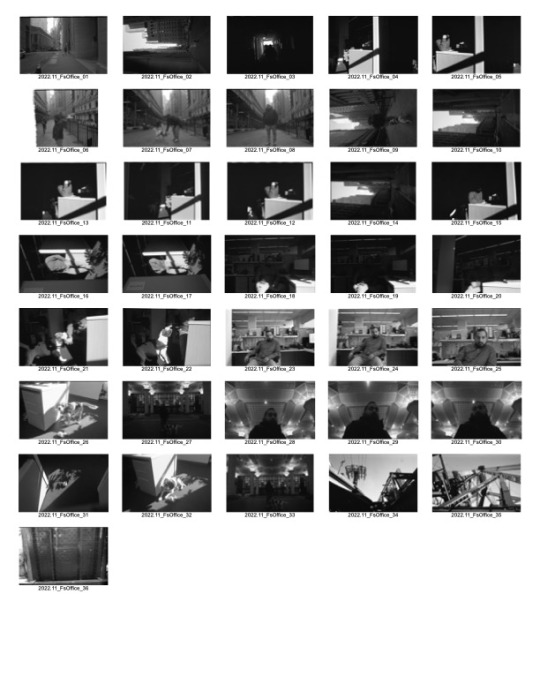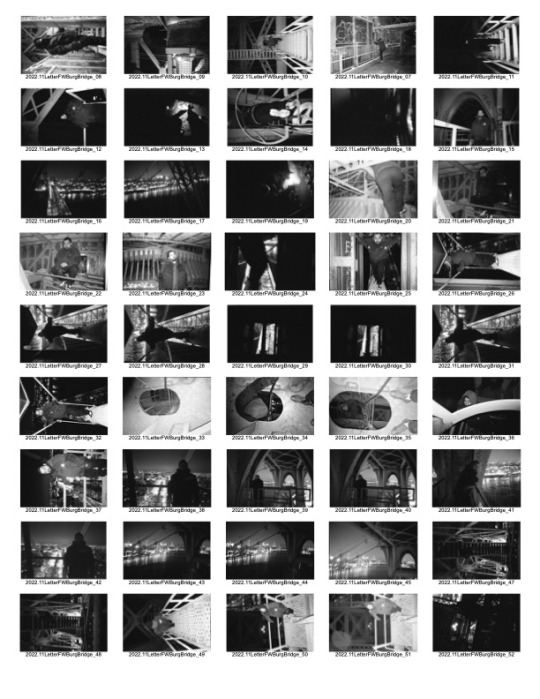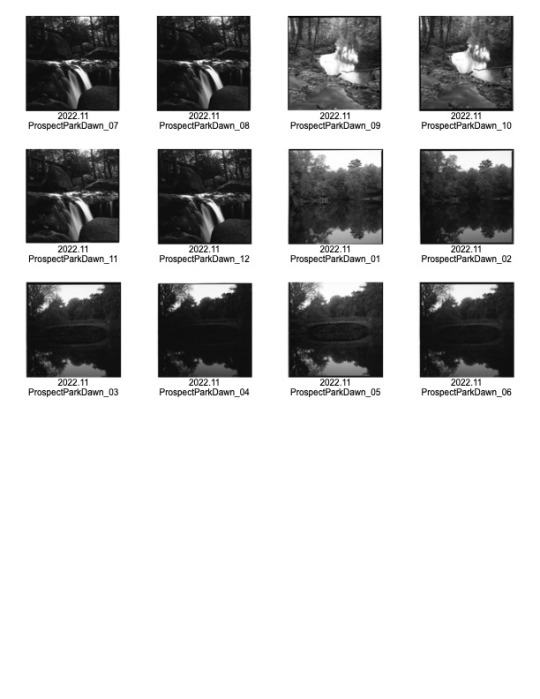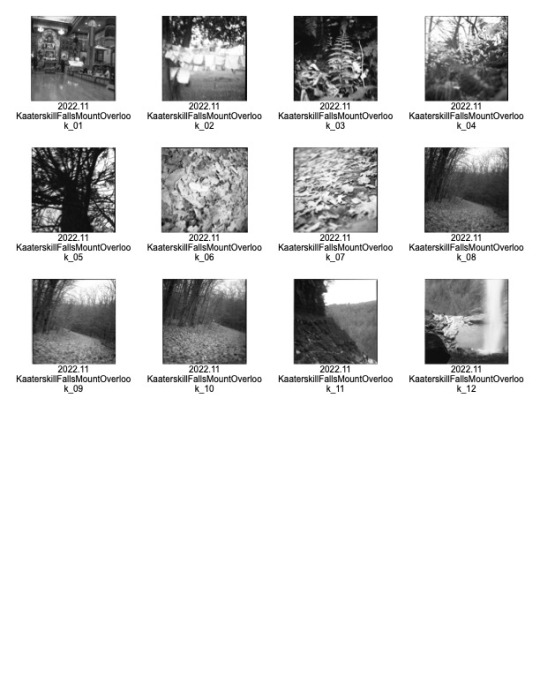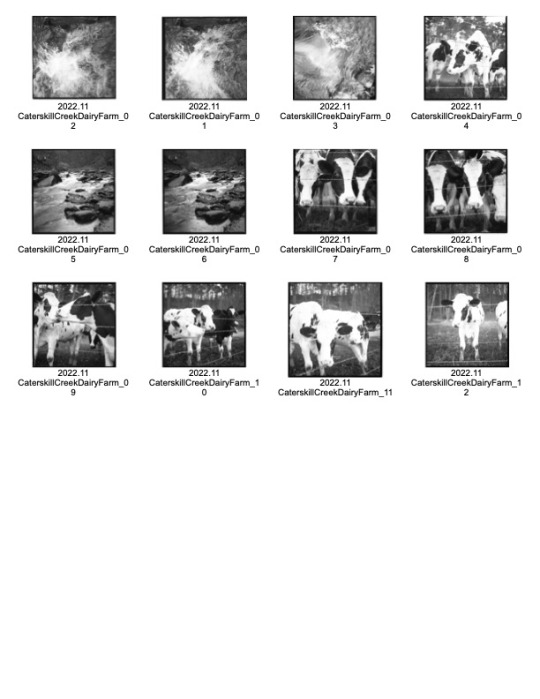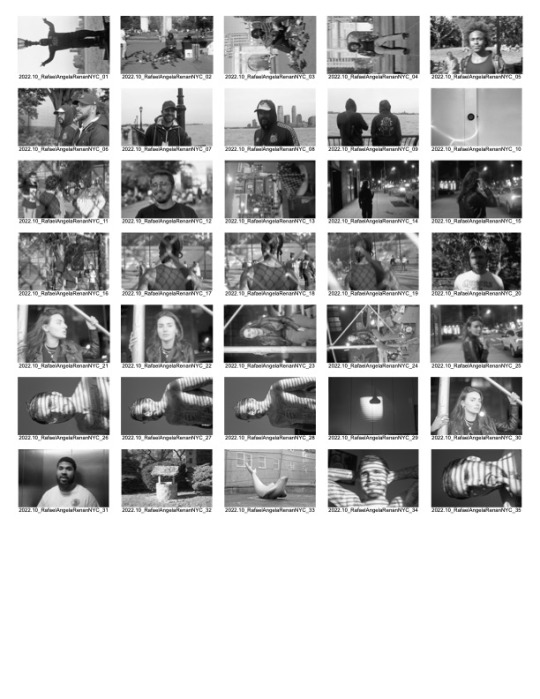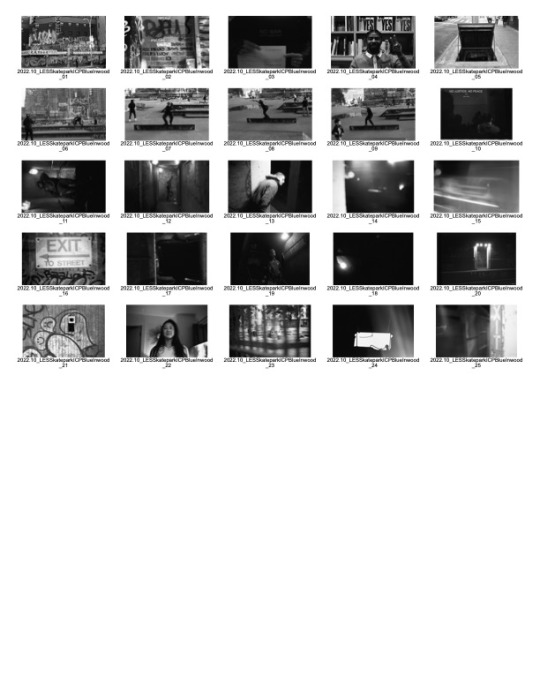#hua230
Text
image into words —

with each day that passes
i feel myself losing
more and more of myself,
to this
t
h
i
n
g
that was
never mine
to begin with
3 notes
·
View notes
Text
Final Project Progress - Week 5





Week 5, Roll 1 Highlights
Technical Notes:
This was actually the second building inspection that I had gone to, as the first one I made the unfortunate mistake of improperly loading my film and capturing nothing. Insurance reasons prevented me from going up in the "basket" with the rest of the contractors. The second inspection was scheduled two hours earlier than the first one I'd gone to and due to that I missed some of the beautiful higher contrast sunset lighting I thought I had gotten the first time (the building is along the Hudson River).
Ultimately I may only use two photos from here for the final portfolio.
Shot using Kodak TMax400, developed normally with HC110(b).
0 notes
Text
Final Project Progress - Week 4
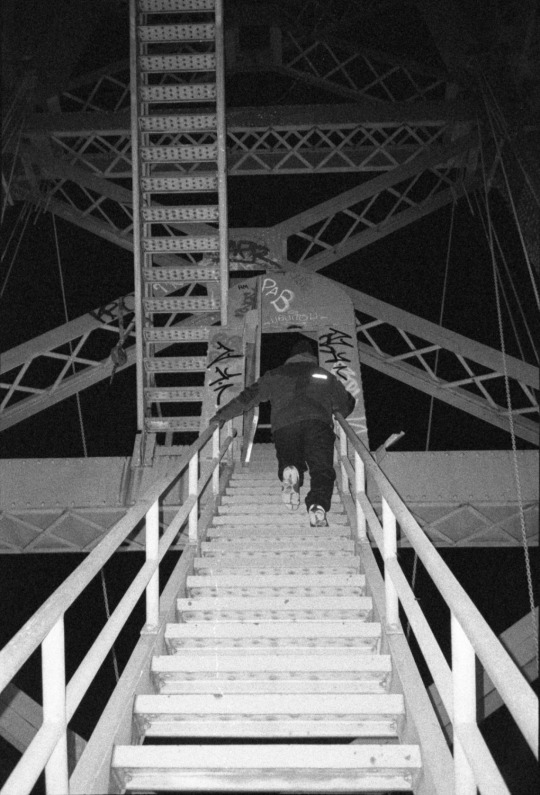
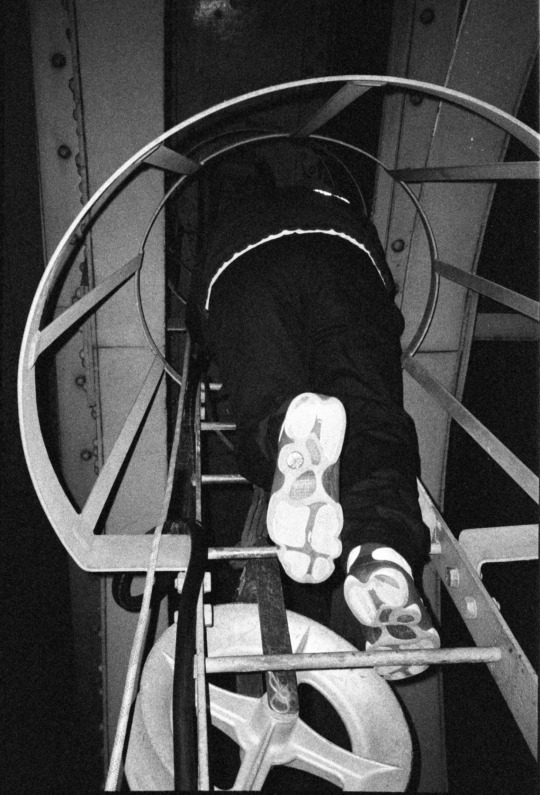


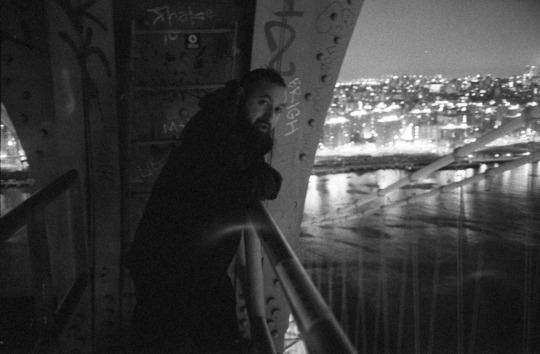


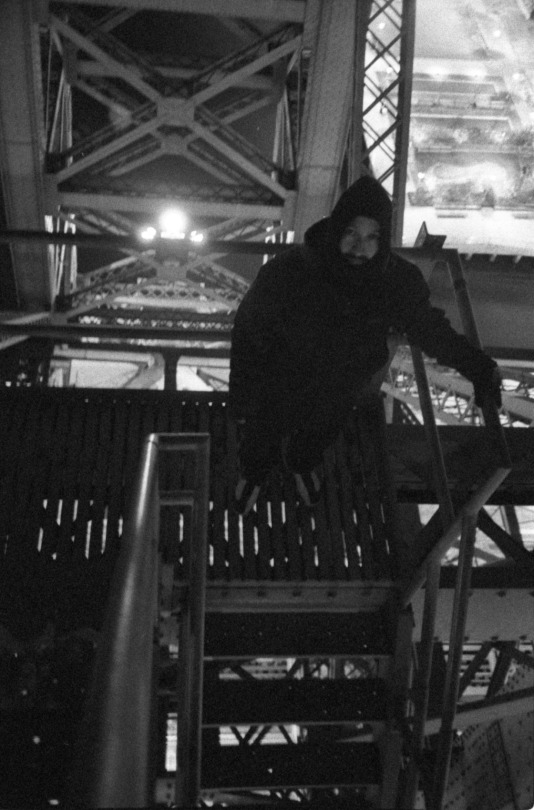

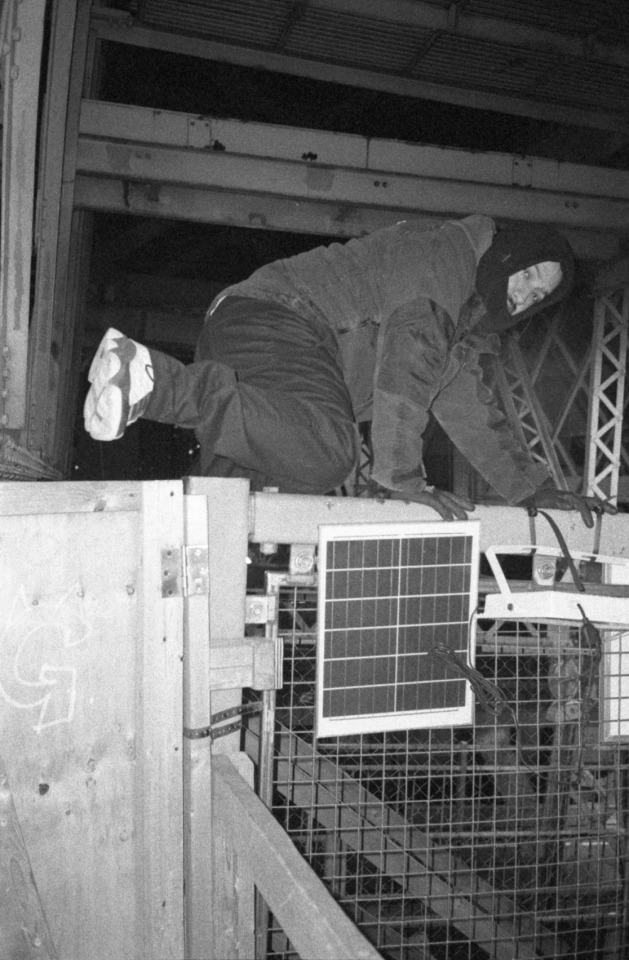
Week 4, Roll 1 & 2 Highlights
Technical Notes:
We took off Week 3, originally scheduled to climb the bridge, because it was freezing out and we were both unmotivated. The perfect night came a week later and it was unnaturally balmy for this time of year. It was one of those nights where you just feel it, that everything is going to go perfectly. So we took some whisky shots and made our way over to the bridge and found the entry door to the ascending stairs sprung wide open-- this is an unusual occurrence. Feeling confident that fate was on our side we went up confidently and slowly, taking pictures the entire way up and down.
One unfortunate thing that did occur was the Pentax camera freezing. It was too cold for it to operate and the shutter would freeze shut after one capture. If I warmed it against my body and sacrificed a frame it would work again but this proved to be tedious and time consuming so I resolved to ditch it along with the tripod, and shot exclusively on my Olympus Stylus Epic point and shoot camera. I held my breath and tried my best to stay as still as possible for the shots without flash. Overall I'm very happy with the results and the focus, given the circumstances.
All shot on Kodak TMax3200, pushed a stop to 1600iso, developed HC110(b) normally at 1600.
1 note
·
View note
Text
Final Project Progress - Week 2

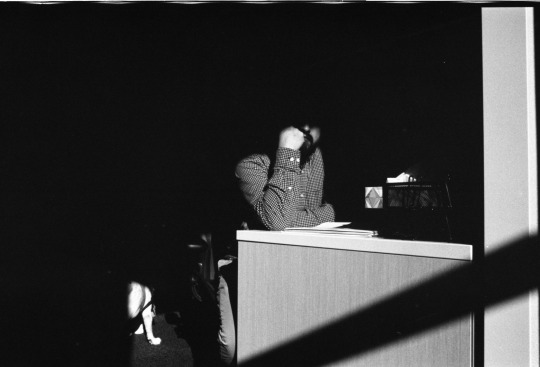

Week 2, Roll 1 Highlights - Kodak TMax400, shot early morning

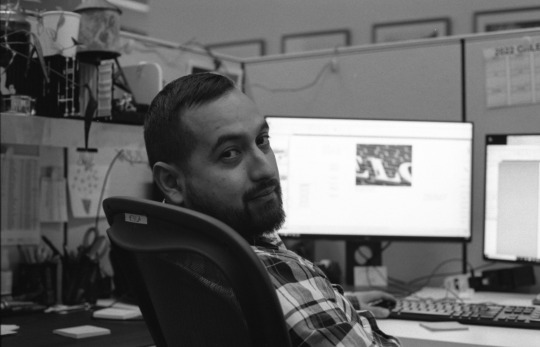

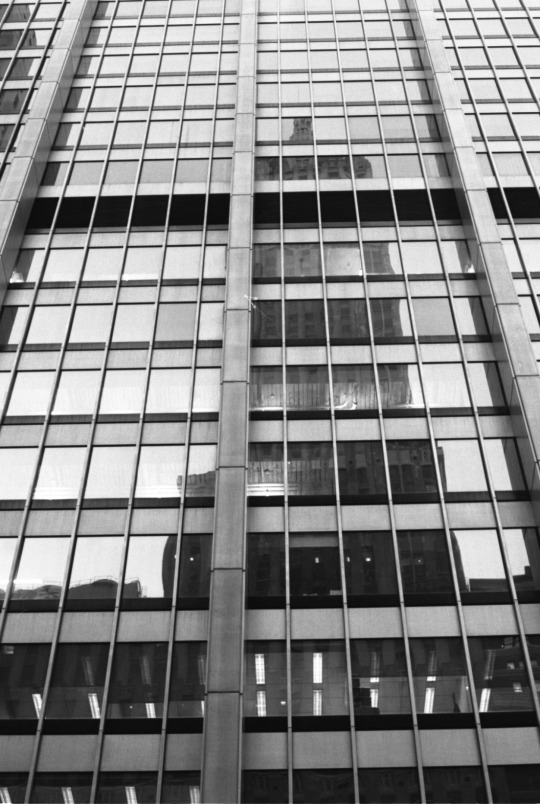
Week 2, Roll 2 - Kodak TMax 400, shot evening, separate day.
Technical Notes:
Remembered how much I love TMax400 with these shots. Struggled to find a more interesting POV for this section of photos. The most interesting shots have little to do with the subject matter and won't be used in the final presentation.
I do appreciate these photos from a photojournalistic standpoint but struggling to see if and where they fit in the final portfolio presentation being that it's limited to fewer prints than I feel comfortable with to fully convey a story.
All were shot using Kodak TMax400, developed normally with HC110(b).
0 notes
Text
Final Project Progress - Week 1
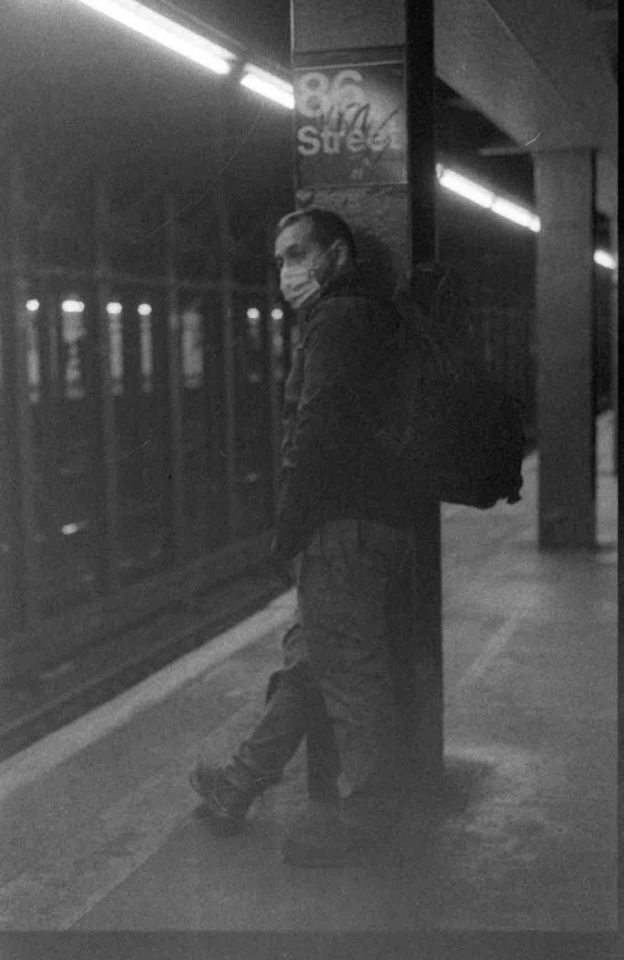
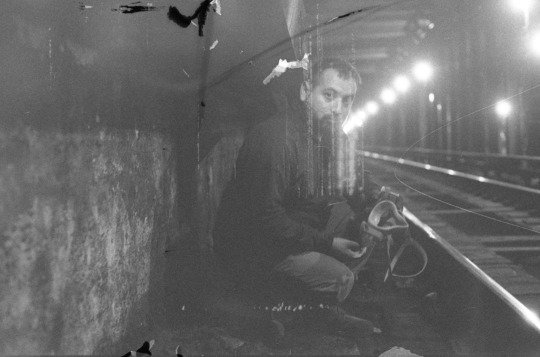
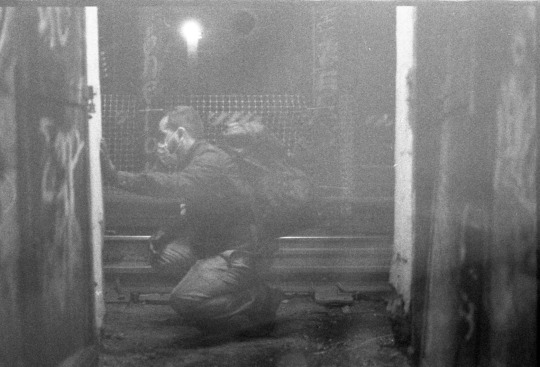

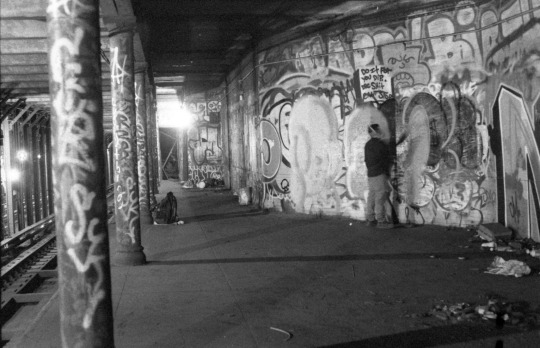

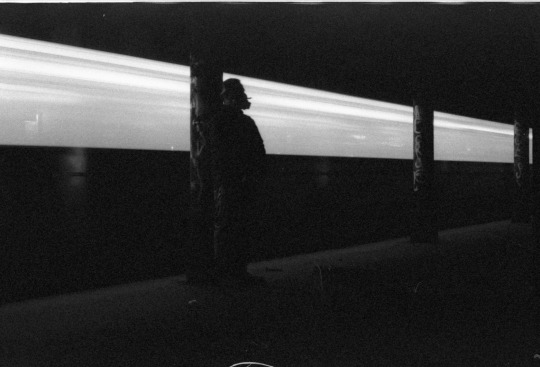
Roll 1 Highlights
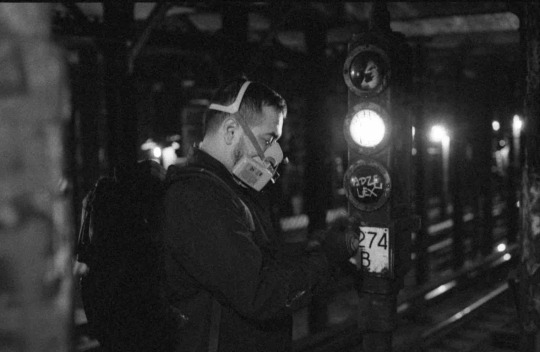

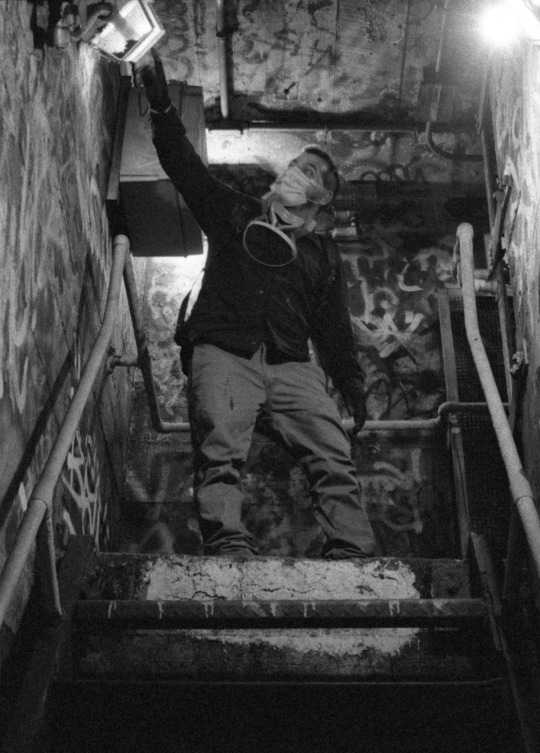

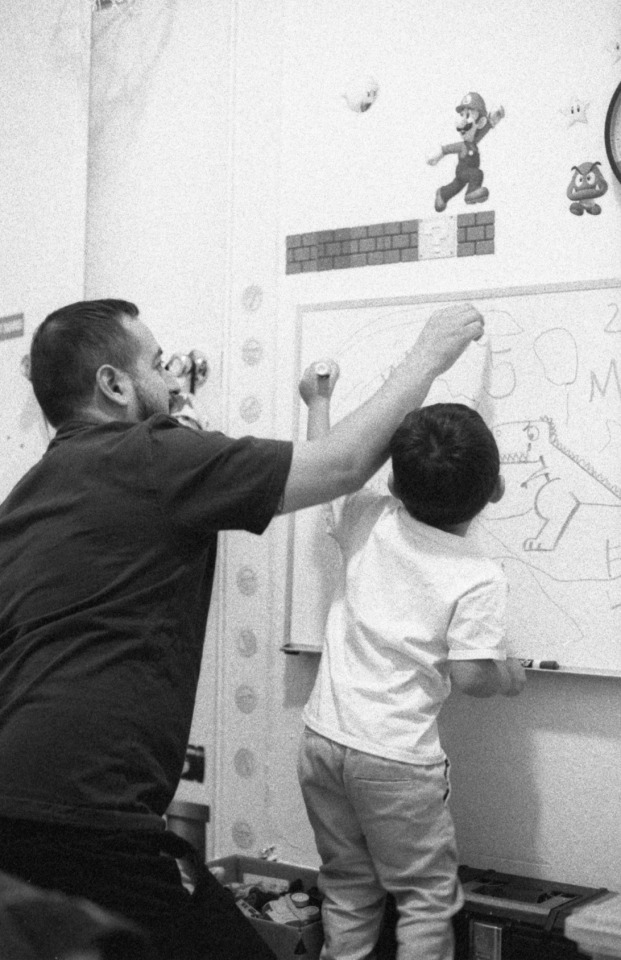


Roll 2 Highlights

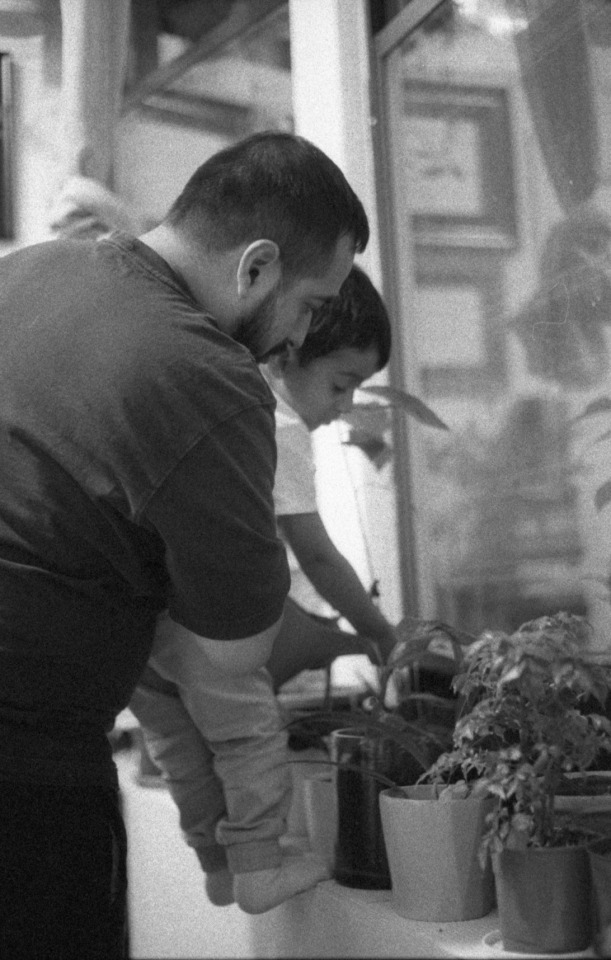

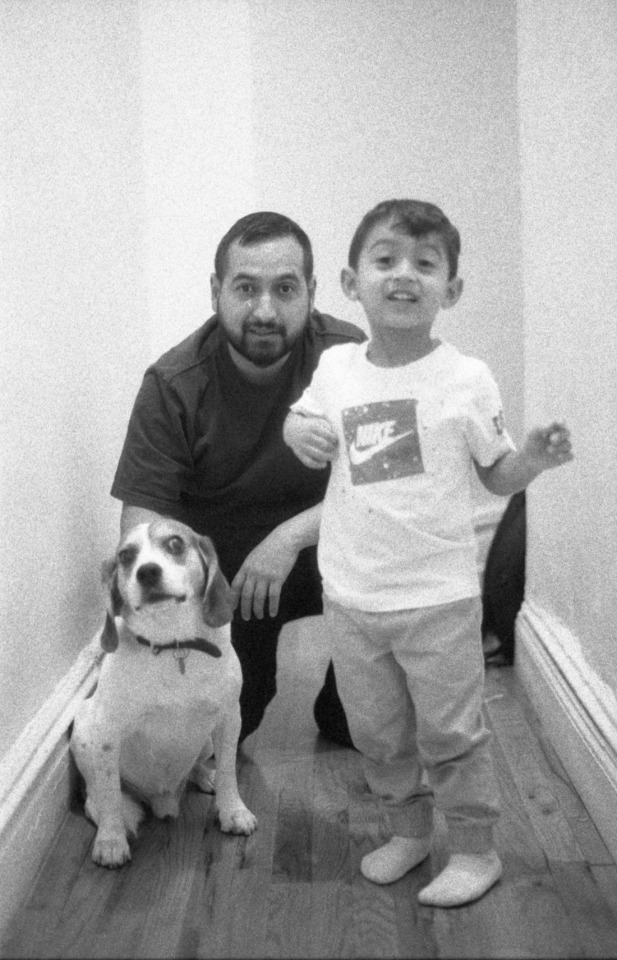



Roll 3 Highlights
Technical Notes:
Photos above are of "Action 1" having taken place in a subway tunnel in Upper Manhattan. The first roll was ruined during development due to poor decision making resulting in carelessness, but it created some effects on the negatives that were interesting. Not all of the negatives were developed equally, so some shots that had the potential to be very good didn't come to fruition, and the shots that.I did like, even if they were interesting, I felt hesitant to use them in the project because they felt more like "art" and less like "documentary".
The second roll was divided between "Action 1" and shots at home with "F" and his son. His wife declined to be in the photos. His son loved the camera and it ended up being a lot of fun, as well as being quite touching to have been entrusted with capturing such vulnerable and intimate moments between a father and son.
Roll 3 was shot in the home. All rolls were developed normally using HC110(b), all were shot using Kodak TMax 3200.
0 notes
Text
Final Project Field Plan
Goals/ Objective:
This photo essay is a branch off of a personal project I have already been working on this past year about native New Yorkers that give and are part of the “street culture” of New York City. The project aims to highlight the native New Yorkers (that I personally know) that make this city the cultural epicenter that it is. By being a part of their respective “scenes” or subcultures, these people by proxy inspire tourists worldwide to flock to New York City with the goal to take part and meet others of these urban subcultures. My friends are the people that inspire other skateboarders, BMX riders, alleycat racers, urban explorers, or graffiti artists to come here and be recognized on a global scale, as New York City is a scene that everyone from around the world pays attention to get a pulse on what’s happening in the scene, and the direction it’s going.
That being said, the premise of the project was to remove people out of the environments of their respective subcultures (the skatepark, a subway tunnel, the stairs of Union Square) and take their portraits in more intimate environments such as their home, their art studios, a place sentimental to them, etc. Essentially stripping them of their “titles” and just photographing them as “normal people”, posing questions of identity. Are these people as “relevant” in their “normal lives”? Do these portraits have the same ability to captivate the viewer as if they were viewing a photo of this person within the context of “Thrasher” magazine, or across the finish line, or in a graffiti zine, or at their art exhibition? What is the actual identity of people whose lines are blurred between “just a hobby” and complete personal identity?
For my personal project, I seek to go a bit deeper than a simple portrait, and instead create a photo essay about “F”: a good friend of mine, a father, a husband, a son, an architect, a graffiti writer, a New Yorker. Specifically I seek to examine in greater detail this division of identities and the intricate balancing act of them all, as only some overlap exists between certain identities, while others are fiercely compartmentalized and protected. I plan to continue examining how “F” gives to “street culture” of New York City by working on the buildings that create our visual landscape while contrastingly writing graffiti on separate architecture, and finally, what he takes home from it all at the end of the day, if anything at all.
Tentative Field Plan from November 1st – December 12th.
Week 1: 11/1 – 11/7
Meet with “F” in his home located in Harlem.
Portraits of “F” and nuclear family (son and wife).
Photography Direction: home life taking place in the living room and kitchen.
Map out the specifics of future “actions” in the coming weekends and making equipment decisions for future “kits”.
Supplies: Pentax K-1000 and 3200 speed film (the apartment does not receive much direct sunlight and I am expecting to meet more towards evening time).
Week 2: 11/8 – 11/14
Develop photos from week prior, begin making selections and edits.
“Action” 1
Tentative date: weekend of 11/11, 11/12, 11/13. Midnight hours.
Location: NYC subway tunnels, exact location undetermined
Vision for graffiti; undetermined
Photography Direction: action shots using flash, long exposure atmospheric shots, “double” exposure long exposures devoting half the exposure time to portraiture and the other half to action, normal portrait shots (flash use TBD depending on lighting), photos entering and exiting (safety permitting), photos of preparation and clean up.
Supplies Required: Spraypaint (amount and colors TBD), Backpack, face masks, respirators, gloves, Pentax K1000 camera, tripod, fill flash (need to request from department), 2 rolls of Kodak TMax 3200 film.
Week 3: 11/15 – 11/21
Develop photos from week prior, continue making selections and edits.
“Action” 2
Tentative Date: Weekend of 11/18, 11/19, 11/20. Midnight Hours.
Climbing atop the Williamsburg Bridge
Weather dependent ***
Plan B- Tunnel Part 2 (specifics TBD)
Required materials will be same as “Action” 1
Photography Direction: long exposures of architecture/infrastructure, long exposures of the cityscape in the distance most likely using bracketing techniques. Closeup portraiture of “F” against the backdrop of the beams/ infrastructure (hoping to have sufficient light to not require flash but will use if necessary), portraits from farther back showing full body and location (long exposure), portraits of “F” with cityscape background (long exposure), action shots ascending/descending the bridge (no flash, lighting should be sufficient in the lower parts), the walk on the way to and from the action (before and after), quick action shots of “F” writing graffiti.
Graffiti not intended to be as involved as “Action” 1. It functions on this occasion more so to simply mark, “I was here”.
Supplies Required: 3 cans of spray paint (colors TBD), backpack, gloves, face masks, Pentax K1000 camera, tripod, fill flash, 2 rolls of32800 speed film (Kodak TMax).
Week 4: 11/22 – 11/28
Focus on continued development of photos and heavy focus on printing this week.
Thanksgiving Week **
Not much time for shooting this week due to holiday.
Will visit “F” and nuclear family in their Harlem home briefly over the weekend to spend some time, give thanks, and shoot minimally. I do not plan to use more than half a roll of 800 speed film.
Required supplies: 800 speed film, Pentax K1000.
Week 5: 11/29 – 12/5
Friendsgiving
Location: New Jersey
Date: Saturday, 12/3/22.
Photography Direction: Portraits of “F”, nuclear family, and close friends. Photos are planned to be a more intimate view into the personal aspect of his life and the bond shared amongst friends, and the love and warmth created around sharing a meal together. Atmospheric photos of the table settings and layout, the food and drink provided, and the celebration as the night goes on.
Required Materials: 800 speed film and fill flash (use is light dependent— some parts of the house have sufficient lighting and others do not).
Week 6: 12/6 – 12/12
Continued development and selection making and editing of photos. More final edits pulling the entire project together.
Office Visit scheduled for December 10th, Saturday.
Will be receiving tour of “F” architectural firm.
Specific name of firm will be purposefully excluded from the documentation.
Briefs of current projects under works
Visit of one work site after office visit
“F” to show the work underway personally from the ground level; entry onto lifts/ scaffolding not permitted.
Conversation with “F” as to his interpretation of the work he does during weekdays versus the work he does for hobby and how they interrelate.
Photography Direction: Atmospheric shot of the office, closer shots of his desk/workstation. Shots of plans, blueprints, computer workstation, materials brought back from site, materials used for building inspections. Pictures of “F” dressed for a day of work. Full body shots of him leaning against his desk. Close up portraits sitting in his work chair, him answering emails. Work site direction include taking photos of the work in general, and perhaps a photo making a physical representation as to the work being done (a pointed finger, a closeup detail of façade if possible). Work site specifics TBD depending on access.
0 notes
Text
Class Notes - 11/1/22
Bruce Davidson:
Sometimes asked permission, sometimes complimented after the fact
Shot Subway using Kodachrome 64 film, slow film, high contrast. Creates dense shadows.
Used flash sometimes, other times no flash
Used lens filters at times
Brooklyn Gang, Jokers-- used 100W bulb for the shots under the Coney Island Boardwalk
"Record them, show them as they are"
Magnum photos has his photos on display
Research:
Julio Mitchel
Susan Marsalas - Carnival Strippers
Gary Whittaker - street photographer
Bill Cunningham - Fashion NYT, rode around the city on bike and shot "neighborhood fashion" photos.
0 notes
Text
Class Notes - 10/25/22
Oral Presentation:
November 22nd
Mary Ellen Mark
10-12 minute oral presentation due
F Stops:
1.0 - 1.2 - 1.4 - 2 - 2.8 - 4 - 5.6 - 8 - 11 - 16 - 22 - 32 - 45 - 64
Shutter Speeds:
BULB - 1s - 1/2s - 1/4s - 1/8s - 1/15s - 1/30s - 1/60s - 1/125s - 1/250s - 1/500s - 1/1000s
Jerry Uellsman:
silk screen reminiscent darkroom printing style, photo montage
Using a red filter in the enlarger, the red does not expose any light, allowing one the time to line up negatives and create custom shaped doge/burning tools to "montage" photos on one silver paper.
0 notes
Text
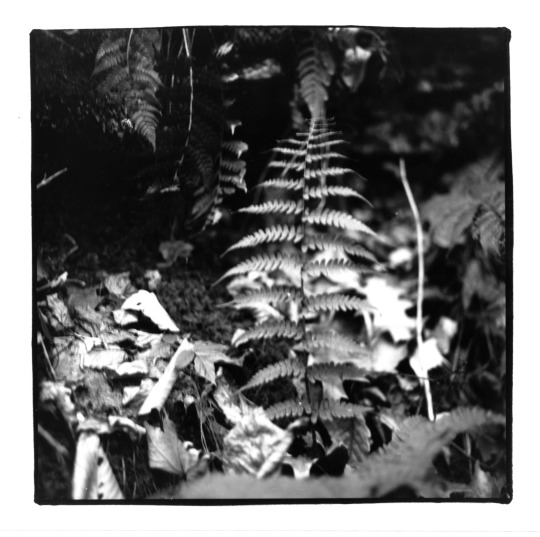
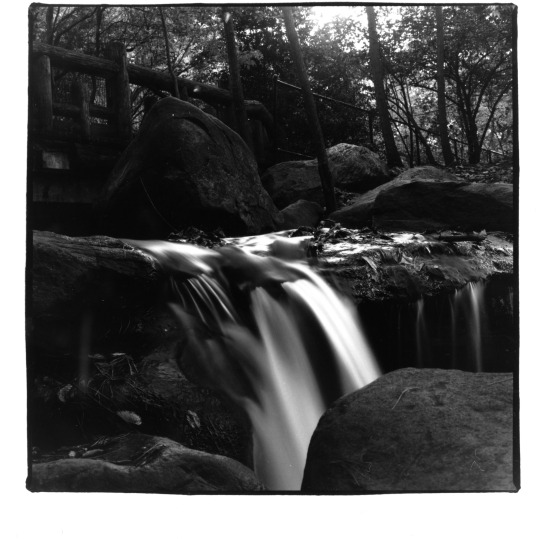
Low Contrast
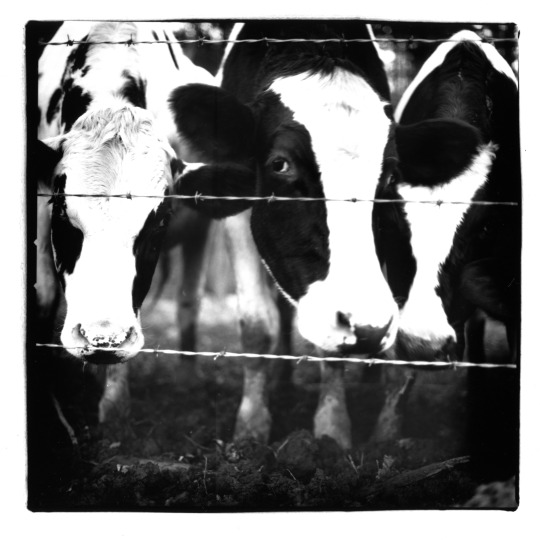

Medium Contrast
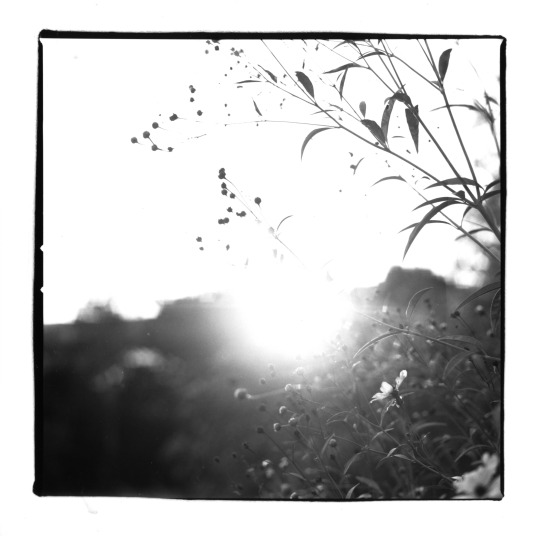

High Contrast
Assignment 2- Wood, Water, Stone, Flora
The Wood, Water, Stone, Flora assignment requires that you photograph a variety of natural subjects at 3 different levels of contrast, high, medium and low using one film type. Ilford FP4 iso 125
The final assignment should include a minimum of 4 images, one from each situation (High medium and low) and one of your choice.
Use a different roll of film for each situation. Use the same film type for all the contrast situations
Use of a tripod and cable release is REQUIRED for this assignment.
Control the contrast in each situation through development
Use the manufacturers recommended time for development as your N development time. (for normal contrast). N+ add 40% to development time (use this for low contrast). N- subtract 20% (for high contrast)
Use the same developer, dilution and temperature for all 3 rolls. The only variable should be the development time.
Technical Notes:
This was definitely the most challenging assignment of the semester.
I decided to spend a weekend upstate in the town of Catskill to get the shots for this assignment. I had tried to take some nature shots locally in Prospect Park but felt disinterested.
I shot exclusively on medium format because I thought a 24 exposure roll of 35mm filter would be too much to try and get through when I know that I usually have a hard time finding interest in landscape photography. The medium format decision resulted in using a Hasselblad 6x6 camera-- I'd never shot medium format before, never used a Hasselblad, never shot square-- there was a lot going on. One of the first days trying to figure out the Hasselblad I actually got motion sick after using it and being almost upside down trying to get this shot in the middle of the freezing cold creek for almost an hour. I stepped in cow manure and one cow licked me and the camera so hard it almost fell and I became terrified I'd owe the school thousands of dollars. My shutter cable kept popping out of the camera even though I was sure I screwed it in properly. It was also pretty stressful chasing sunlight (or lack thereof) all day, as this assignment taught me that those perfect lighting moments go as quickly as they come. I also found it difficult to understand what might translate as normal or high contrast on black and white film as I looked at the world in color and many of the shots didn't come out as I had planned because I wasn't expecting the high contrast of the film. I had a hard time trying to train my mind to look at everything tonally. After all these shots, the darkroom came with its own challenges and was kind of a nightmare until the very end when I finally came to understand how to properly use filters and split tone print. By the end of it all I understood why we had been given this assignment and I am very grateful for it-- I was able to take away a lot of new learned skills and knowledge.
0 notes
Text
Assignment #2- Contact Sheets


Ilford FP4 - low contrast (N+40%), developed HC110(b) - 9 min, 68°F


Ilford FP4 - normal contrast (N), developed HC110(b) - 8 min, 68°F

Ilford FP4 - high contrast (N-20%), developed HC110(b) - 7 min, 68°F
0 notes
Text







Assignment #1 - 10/18/2022
Make an environmental self-portrait in a mirror, reflection, shadow, or using a tripod that shows a strong sense of place.
Make several exposures that reflect your persona or aspects of your life, as seen for example through a dirty broken window, or an empty street at midnight. A crack in an old wall, a toy doll left on the street, or a passing puffy cloud with a silver lining. The images should evoke a mystical secret of your personality or family history.
Make several exposures of a portrait of someone you find compelling using natural light.
Submit on October, 18th 2 8x10” rc prints darkroom prints of each assignment. Mark the film type used on the border of your work prints. 6 images total.
Scan or photograph your prints and upload to your Blog.
Experiment using 2 different film types for this assignment.
3 rolls of film minimum.
Technical Notes:
This assignment was the first time having shot film on an SLR camera since ~2010 and the difficulties that I faced were more muscle-memory based. I would forget to rate my film properly or push it a stop on the camera, I was still getting accustomed to remembering F-Stop/Shutter Speed relations with lighting (I think now, at the end of the semester, I am much better at reading the light in a scene and choosing settings that make a good exposure off the top of my head), and I forgot about 2/3 of the assignment until the very end and it shows. I never had a camera that I could make proper portraits until I rented a camera from LAGCC and I got obsessed with making portraits of everyone around me, only taking a handful of exposures that reflect aspects of my personality and more as an afterthought. Finally, I dread taking photos of myself for some reason and I left the self portrait for the absolute last, and it was rushed and without much effort or thought into how to make it creative. It's a part of the assignment I will surely have to revisit in the future and push myself to overcome that boundary/blockage. This assignment was informative in trying different films and getting a feel for my tastes aesthetically. Arista EDU is horrible and not a film I would waste money on in the future. I'm not crazy about the amount of grain in 3200 film, which is ironic as I would go on to use it almost exclusively for my final project. In the darkroom, I would struggle to make prints, make informative test strips, resulting in a lot of guess work, but the upcoming second project would fix that.
0 notes
Text
youtube
I found Tim Rudland’s tutorial using advanced bleaching and toning techniques during silver gelatin printmaking to be highly information, inspirational, and thought provoking. It was the first time I had seen a painterly-like physical touch added to a photo print. By this, I am referencing Rudland’s mixing of specific black/gray shades of ink to spot paint over enlarged dust spots, and his use of a paintbrush to bleach very specific spots on his print. Being exposed to these techniques challenged me to rethink about how I think about the printmaking process. Additionally I found his explanation of yellow and magenta filters, and use of a print map in the beginning of the printing process to be highly informative, and both tools I plan to use in my own printmaking process going forward.
Consequently, I looked at the photos of Clarence John Laughlin with a more critical eye than I would have had prior to watching Tim Rudland’s tutorial. While studying his photographs I tried to pick out what techniques he may have used in his printmaking. His print titled “Birds in Hyperspace” appears as if he’s used some colored toner, a flash of white light, perhaps a magenta colored filter as the image is highly contrasted, and some dodging and burning.
His use of dodging and burning across many of his photos give a dreamlike quality. As an example, much of the architecture he photographs seems to be surrounded by a slight highlighted glow, in contrast to a darker sky that’s often times has a tonal gradient from dark to light.
1 note
·
View note
Text
“A portrait is not a likeness. The moment an emotion or fact is transformed into a photograph it is no longer fact, but an opinion. There is no such thing as inaccuracy in a photograph. All photos are accurate. None of them is the truth.” -Richard Avedon
Much how “beauty is in the eye of the beholder”, so it is with photographs as well— there is no way to communicate an image without some sort of bias of the photographer being present, their proprietary interpretation of “beauty”, so to speak. Another more familiar example of this phenomenon is in our news sources— it is impossible to spread news without the element of propaganda and/or bias, even if only slightly present. “There is three sides to the story when the truth is being told”— Therefor, no photograph is ever factual because a photograph does not exist without the operator of the camera: the photographer, whom with every calculated, timed use of the shutter button communicates their interpretation of the scene at hand. In observing and appreciating photographs, we accept that we are always looking through the lens (physical and metaphorical) of someone else, and how we pick our favorites photographers isn’t much different from how we pick our news sources— we go with those whose interpreted opinion of the world we can most easily agree with. In this respect, we must accept that perception is the only reality, and with perception being highly subjective especially when communicated through a photograph, we accept that there is no absolute truth existent in any of them.
1 note
·
View note

